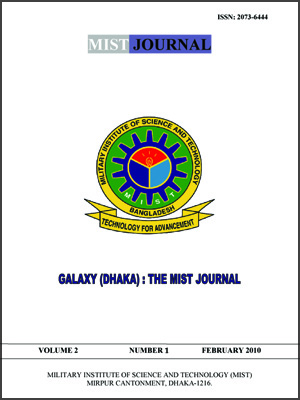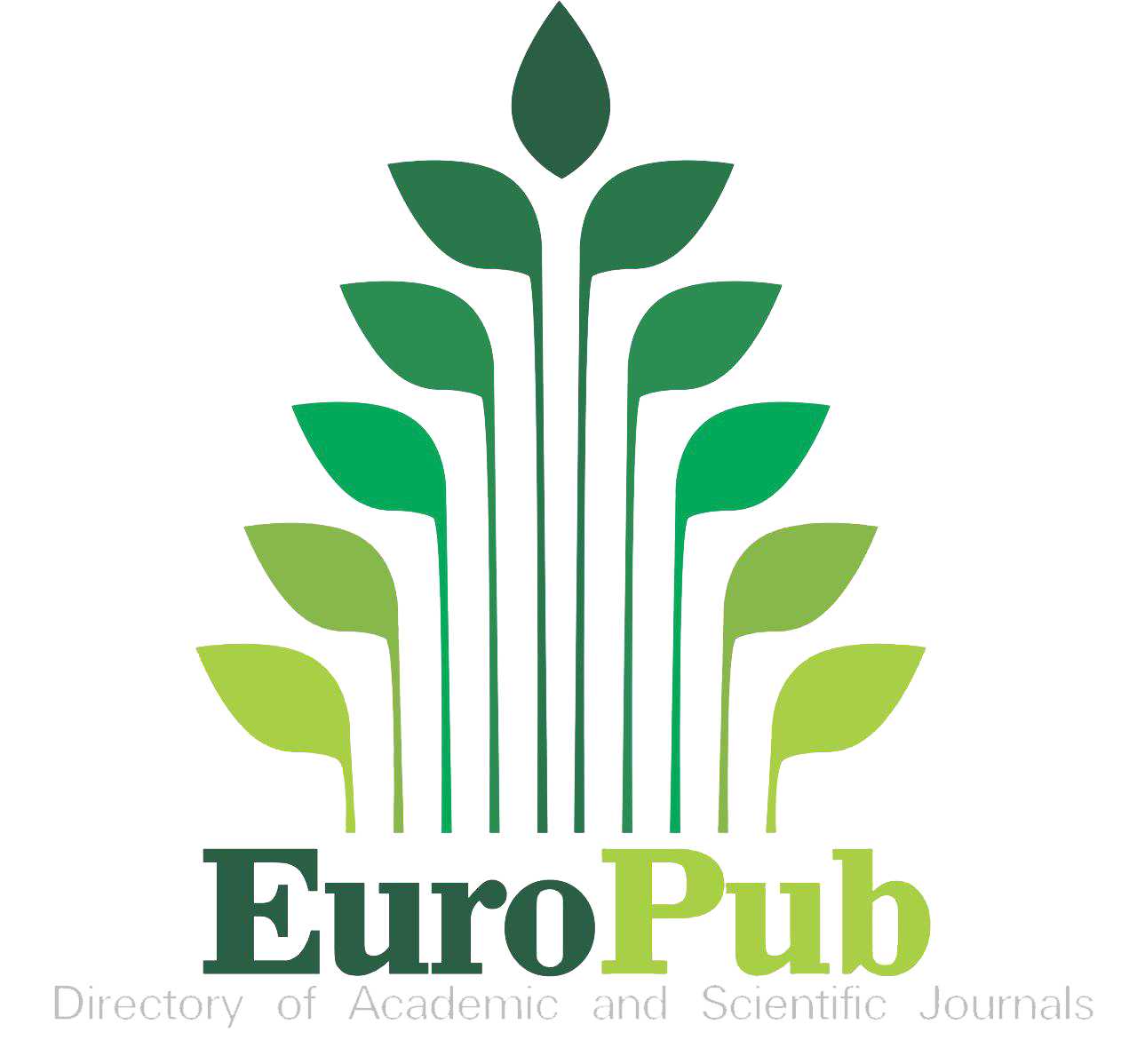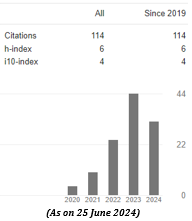EFFECT OF CRUSHING METHODS OF VOLAGONJ STONE ON STRENGTH OF CONCRETE
Abstract
A comparative study was carried on Hand Crushed and Machine Crushed Volagonj stone (major rock of Bangladesh)
graded between 1 in [25 mm] to 0.5 in [12.5 mm]. Stone crushed by both hand and machine were tested for abrasion
value, crushing value, flakiness index, and elongation index. These stone groups were used to prepare concrete
cylinders (6 in. [150 mm] diameter and 12 in. [300 mm] height) for W/C ratio ranging from 0.45 to 0.60. Hand
crushed stone was showing abrasion and crushing value more than machine crushed stone by about three and one
percent respectively. Machine crushed stone is flakier and elongated than hand crushed stone by about six and two
percent respectively. Cylinders made with hand crushed stone showed more compressive strength than machine
crushed stone with an exception of early age (1 day) and high W/C ratio (0.60). This phenomenon suggest low
strength of cement matrix-aggregate interface bond firstly due to low maturity and secondly due to low strength of
cement matrix to bond with aggregate.
Downloads
References
2. Banglapedia. “Gravel”. Retrieved on 04 Aug 2009.http://www.banglapedia.org/httpdocs/HT/G_0201.HTM>
3. Mather, B. “Concrete Aggregates, Shape, Surface Texture and Coatings.” ASTM STP 169. ASTM International. 1966.
4. Neville, A. M. “Properties of Concrete”. 3rd ed. Longman (Singapore). 1995.pp-128
5. Swamy R. N. and Andriopoulos A. D. “Contribution of Aggregate Interlock and Dowel Forces to the Shear Resistance of Reinforce Beams
with Web Reinforcement”. SP 42-6. American Concrete Institute. 1st Jan 1975.
6. Zarais P. D. “Aggregate Interlock and Steel Shear Forces in the Analysis of RC Membrane Elements”. V-94, Issue-2. ACI Structural Journal. American Concrete Institute. 01 Mar 1994.
7. Kamran N. M., Monteiro P. J. M., and Scrivener K. L. “Analysis of Compressive Stress-Induced Cracks in Concrete”. V-95. ACI Material Journal. American Concrete Institute. Sep-Oct 1998.
8. Neville A. M. “Aggregate Bond and Modulus of Elasticity of Concrete”. Vol-94, Issue-1. Journal Proceedings. American Concrete Institute. 01 Jan 1997.
Though MIJST follows the open access policy, the journal holds the copyright of each published items.

This work is licensed under a Creative Commons Attribution-NonCommercial 4.0 International License.
















